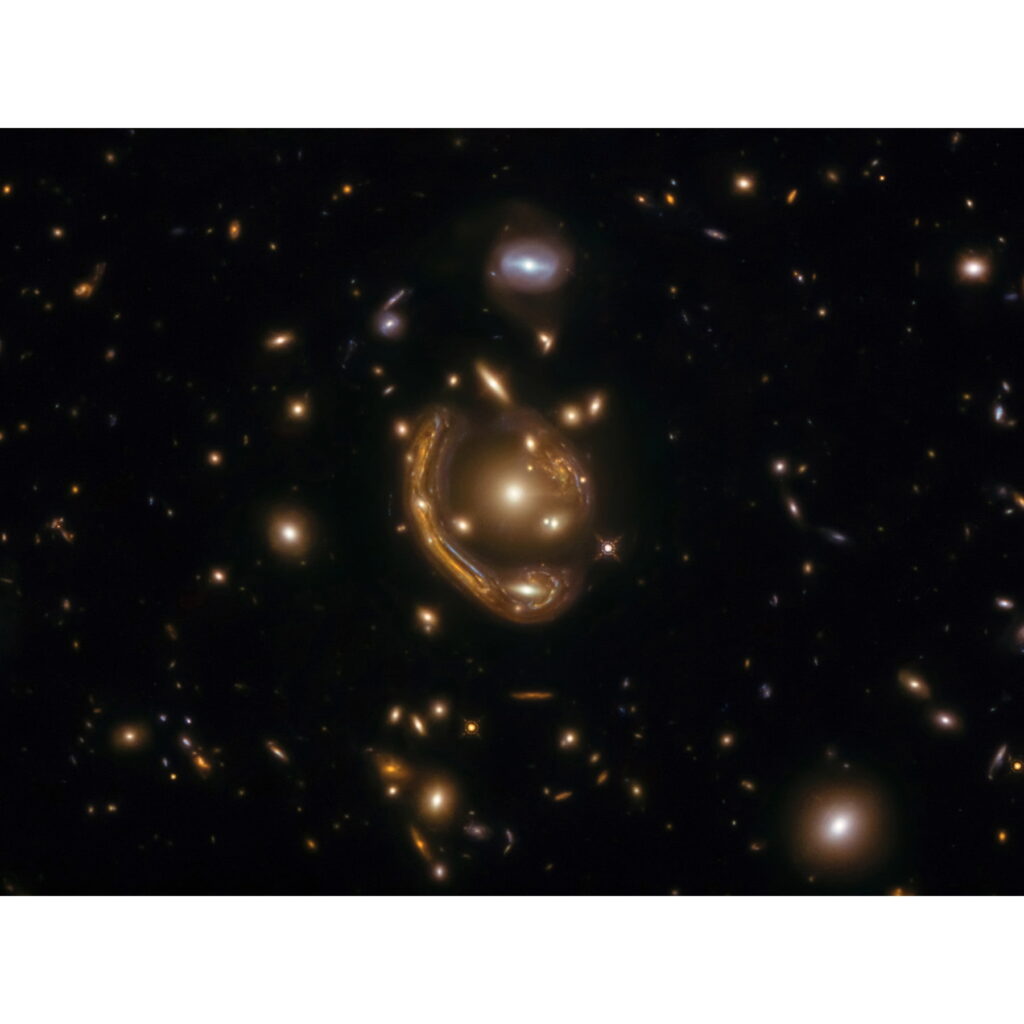
Audience
- Sentiment: Positive
- Political Group: Science enthusiasts
- Age Group: 18-35
- Gender: All genders
Overview
- The Euclid Space Telescope has made significant discoveries in understanding dark matter and dark energy.
- It captured an Einstein Ring, a rare cosmic phenomenon that helps reveal the universe’s structure.
- Euclid’s advanced technology allows for stunning 208-gigapixel images that enhance our comprehension of cosmic phenomena.
The Wonders of the Universe: What the Euclid Space Telescope Just Unveiled
Space has always held a fascination for humans. From the stories of ancient stargazers to the complex science of modern astrophysics, the night sky invites us to wonder about its secrets. Recently, a remarkable piece of technology – the $1.4 billion Euclid Space Telescope – has taken center stage in the realm of astronomy with a discovery that’s as impressive as it is mind-boggling. So, what’s all the fuss about? Buckle up, because we’re about to embark on an exciting journey through galaxies, light, and the hidden forces shaping our universe!
What is the Euclid Space Telescope?
Before diving into its discoveries, let’s understand what the Euclid Space Telescope is. Launched by the European Space Agency (ESA), this telescope is named after the ancient Greek mathematician Euclid, known as the “father of geometry.” However, the telescope’s purpose goes beyond geometry; it aims to delve deep into the mysteries of two of the universe’s most elusive components: dark matter and dark energy. These are not just fancy terms; they are vital elements that make up a majority of the universe!
While we can see stars, galaxies, and planets, about 95% of the universe’s composition is thought to be invisible – dark matter and dark energy. Dark matter acts like an invisible glue holding galaxies together, while dark energy is linked to the universe’s rapid expansion. Crazy, right?
The Discovery: An Einstein Ring
In its early test images, the Euclid Space Telescope managed to capture something truly spectacular: an Einstein Ring! You might be wondering what an Einstein Ring is. Named after the brilliant physicist Albert Einstein, this incredible phenomenon occurs when a massive object, like a galaxy, bends the light of another object behind it. This bending of light can create a complete ring appearance, hence the name.
The recent discovery happened with a galaxy known as NGC 6505, situated about 590 million light-years away from Earth. Just to give you a sense of how vast that distance is, if you could travel at the speed of light (which, mind you, is nearly impossible for us), it would take you 590 million years to get there! It’s hard for most of us to wrap our heads around such huge numbers, but this is the cosmic scale we’re dealing with.
Conor O’Riordan, a lead researcher on the Euclid project, described this early discovery as both rare and beautiful. And he’s right; capturing an Einstein Ring is like finding an extraordinary gem in a vast universe of rocks. While other telescopes have observed similar cosmic spectacles, Euclid aims to take things further by investigating dark matter and dark energy, thus shedding light on how these components impact the universe we live in.
The Beauty of Gravitational Lensing
So, why are phenomena like the Einstein Ring important? They give scientists a unique window into the workings of the universe. Gravitational lensing, the mechanism creating Einstein Rings, allows astronomers to see objects that are otherwise too faint or too far away. It’s almost like having superhero glasses that enable you to see the invisible!
By studying these gravitational lenses, scientists can learn more about the distribution of dark matter in galaxies and how it influences the universe’s structure. Instead of just looking at what we can see, astronomers can use these lenses to investigate cosmic behavior at a grand scale and better understand how matter and energy form the fabric of our universe.
The Stunning Images from Euclid
One of the most exciting aspects of the Euclid Space Telescope is its state-of-the-art technology and high-resolution capabilities. The telescope can produce stunning images – and I’m not talking about your average pictures; these are 208-gigapixel images! To visualize that, think of it as having 208 billion pixels creating a detailed picture of the universe full of millions of galaxies. When you look at these images, you’re not just looking at stars and galaxies; you’re gazing into time, seeing light that has traveled for millions and millions of years across the cosmos.
These incredible images have revealed a treasure trove of cosmic information, and scientists estimate that Euclid might identify around 100,000 strong gravitational lenses over its mission. This means that every time a new lens is discovered, it opens up another door to understanding our universe’s structure and its fundamental forces.
What Lies Ahead?
As Euclid continues to operate and send back more images and data, we can expect to learn even more about the mysteries of dark matter and dark energy. By combining this data with other observations from different telescopes, scientists will be able to build a more comprehensive picture of how the universe works.
At this point, you might be asking yourself: “Why should I care about dark matter or the behavior of galaxies far, far away?” Well, the truth is, understanding these cosmic phenomena can have real-life implications right here on Earth. The laws of physics and the forces that govern celestial bodies also apply to our planet. By learning more about the universe’s fabric, we may also discover new principles that could lead to advancements in technology, medicine, and our comprehension of our own planet.
A Personal Reflection
As someone who loves stargazing, I find it breathtaking that our universe is full of such incredible wonders. Each new discovery feels like a piece of a cosmic puzzle being revealed. When I look up at the night sky, I don’t just see stars; I see stories of ancient civilizations who gazed up in wonder, the ambitions of brilliant scientists who spent their lives exploring these mysteries, and now the potential of cutting-edge technology to take us further than ever before.
Every time I learn about new cosmic phenomena, I feel a sense of connection to something much, much larger than myself. It’s a reminder that while life can be challenging and sometimes overwhelming, there’s a magnificent universe out there full of mysteries just waiting to be uncovered.
What Do You Think?
As we sit on the cusp of what Euclid and other telescopes will reveal, it’s a thrilling time to be interested in space and science! What are your thoughts on the discoveries made by Euclid? Does the idea of dark matter and dark energy intrigue you? Or do you have questions about Einstein Rings or gravitational lensing? Let’s discuss! Post your thoughts and questions in the comments below; I can’t wait to read what you have to say!






